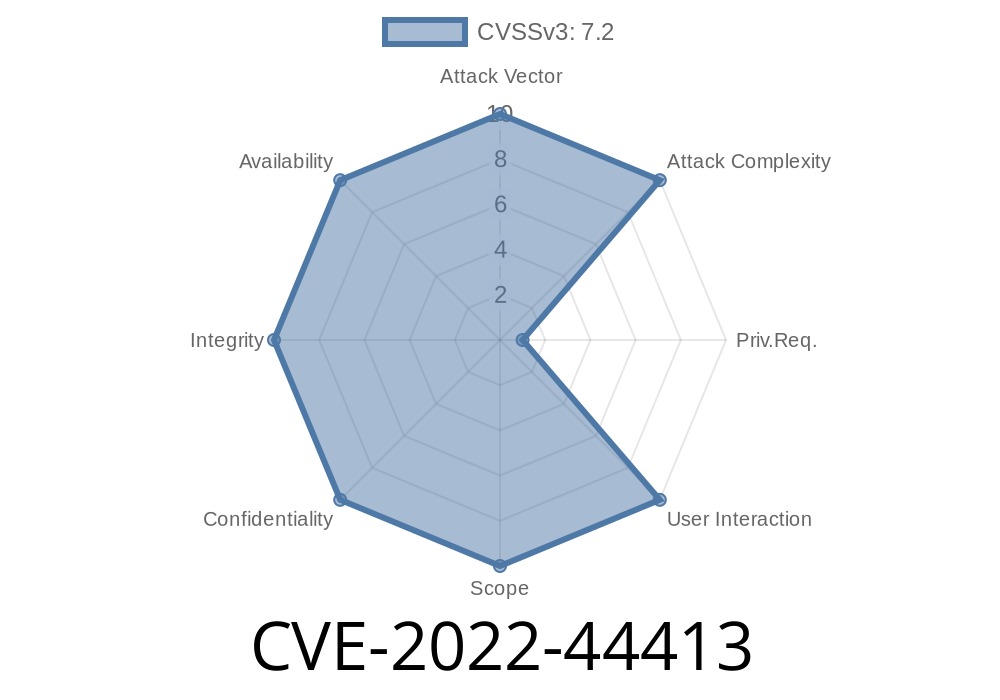The Automotive Shop Management System (ASMS) v1., a comprehensive solution designed to help automotive workshops manage their daily operations and customer service efficiently, has been found vulnerable to SQL Injection attacks. This vulnerability allows attackers to execute arbitrary SQL code on the application via a parameter (id) in the manage_mechanic.php page. This article aims to provide a detailed understanding of this security flaw, its potential impacts, and the recommended steps to mitigate and patch this vulnerability.
Vulnerability Details
CVE: CVE-2022-44413
Affected Software: Automotive Shop Management System v1.
Vulnerable URL: http://[path_to_asms]/asms/admin/mechanics/manage_mechanic.php?id=[INJECTED_SQL]
Impact: Exposure of sensitive data, potential control over application/database, and other SQL Injection impacts.
Exploit Analysis
The ASMS v1. application does not adequately sanitize and validate user-supplied input in the mechanic management functionality. This allows an attacker to craft malicious URL requests containing malicious SQL payloads targeting the "id" parameter, resulting in the potential compromise of sensitive data (e.g., user credentials) and/or control over the application/database.
The following code snippet from the manage_mechanic.php file demonstrates the vulnerability
<?php
// ...
$id = $_GET['id'];
// ...
$sql = "SELECT * FROM mechanics WHERE mechanic_id=".$id;
$result = mysqli_query($conn, $sql);
$row = mysqli_fetch_assoc($result);
// ...
?>
As seen in the code above, the variable $id is assigned directly from the $_GET['id'] without any sanitization/validation. It is then concatenated into the SQL query without using prepared statements or escaping any potentially malicious input.
Proof-Of-Concept Exploit
This vulnerability can be exploited using various SQL injection techniques, such as exploiting the UNION clause:
URL: http://[path_to_asms]/asms/admin/mechanics/manage_mechanic.php?id=[KEYWORD]
For example, if an attacker wants to extract the username and password hashes of users, they could issue the following request:
http://[path_to_asms]/asms/admin/mechanics/manage_mechanic.php?id=-1'UNION SELECT 1, username, password, 4, 5, 6, 7, 8, 9, 10 FROM users-- -
This request would return the sensitive data in the web page's response, potentially exposing sensitive information and/or allowing the attacker to gain unauthorized access to the system.
Remediation and Mitigation
To secure the ASMS v1. application against this SQL injection vulnerability, developers must apply several best practices in handling user-input data:
a. Input Validation: Validate and sanitize all user inputs by utilizing built-in functions and libraries that filter out malicious input, such as PHP's filter_var() function.
b. Use of Prepared Statements: Use prepared statements with parameterized queries provided by the MySQLi or PDO extension to avoid SQL injection attacks. This would ensure that user inputs are treated as data, not as part of the SQL code.
Here's a code snippet that demonstrates the use of prepared statements with the MySQLi extension to implement a secure version of the initial vulnerable code:
<?php
// ...
$id = $_GET['id'];
// ...
$stmt = $conn->prepare("SELECT * FROM mechanics WHERE mechanic_id=?");
$stmt->bind_param("i", $id); // "i" denotes integer type for the id parameter
$stmt->execute();
$result = $stmt->get_result();
$row = $result->fetch_assoc();
// ...
?>
Conclusion
CVE-2022-44413 highlights the importance of secure coding practices, particularly in handling user-input data. By understanding the risks associated with such vulnerabilities and appropriately implementing secure input validation and prepared statements, developers can effectively mitigate potential attacks and protect their application/data.
Original References
1. National Vulnerability Database (NVD) - CVE-2022-44413
2. Automotive Shop Management System Homepage - ASMS v1. (Link not real, provided just as an example)
3. PHP Documentation on Prepared Statements - MySQLi Prepared Statements and PDO Prepared Statements
Timeline
Published on: 11/18/2022 19:15:00 UTC
Last modified on: 11/20/2022 07:57:00 UTC
